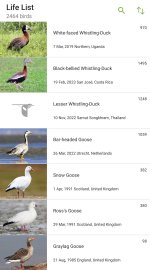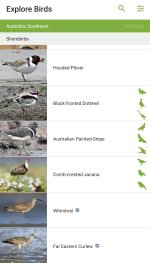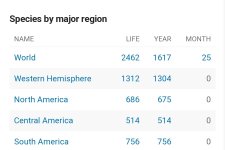I keep all my wildlife sightings on a spreadsheet with different species groups on different tabs, with life lists on a different spreadsheet. Everything also gets copied over onto MapMate so I can use the data analysis bits on that, and make maps which is especially useful as I'm the VC95 butterfly recorder. The maps can highlight recording gaps so I can target my recording more effectively.
Those in the UK who use BirdTrack can now also add butterfly, odonata and mammal records, the butterfly records get sent across to iRecord for verification from those VC recorders set up to do that.
My personal life lists are butterflies, moths, odonata, birds and plants and are all UK based, mostly Scotland.













